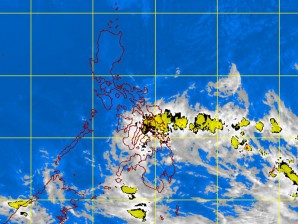You can still strut around in your favorite sweater or cuddle up around bonfires. The big, belated chill is here.
Expect early mornings and late evenings to be colder across the country due to the peaking winter season in the northern hemisphere which in turn intensifies the nippy northeast monsoon, the state weather office said Sunday.
The Philippine Atmospheric, Geophysical and Astronomical Services Administration (Pagasa) said minimum temperature in Metro Manila hit 20 degrees Celsius at 6 a.m. at Science Garden, Pagasa complex in Quezon City on Sunday.
It was the lowest temperature recorded so far in the capital this year, according to forecaster Nikos Peñaranda.
The mercury started to drop last week as the northern hemisphere settles into deep winter, the agency noted.
The coldest day in recent history in Metro Manila was measured at 15.1 degrees in February 1987 and again in December 1988.
Delayed arrival
In Baguio City, the much-awaited brrrr was felt on Saturday morning when the temperature dropped to 10.4 degrees at 5 a.m., said Efren Dalipog, Baguio weather specialist. The reading went up again on Sunday at 12 degrees, he said.
The summer capital experienced its coldest day on record on January 18, 1961, when residents woke up to a temperature of 6.3 degrees.
Pagasa said the “sweater weather” arrived late in the Philippines this year due to the resurgence of the La Niña phenomenon late last year, which strengthened the warm easterly winds.
As a result, the northeast monsoon, which brings in the cold air, could not spread as early as before across the southern parts of Luzon, including Metro Manila.
But Peñaranda said the coming cold weather would not necessarily be felt seven days a week.
“It will come in cycles. We expect it, for example, to become warmer on Wednesday,” he said.
Boon to farmers
In an earlier interview, Dalipog said Pagasa expected the cold spell to be more pronounced this month and that the erratic weather was proving to be beneficial to the agriculture sector of the Cordillera region.
“We are not receiving any reports of frost [in the region’s farmlands] at this time. If there was any, it’s only very minimal but there was no report of damage on vegetables,” he said.
Patricio Ananayo, chief of the agribusiness and marketing assistance division of the Department of Agriculture in the Cordillera Autonomous Region, said it was the first time in many years that local farmers were not complaining of frost-related losses at the start of the year.
“So far, the weather condition is favorable to farmers and we are not experiencing a drop in the temperature. We have an abundant supply of vegetables and these are cheap. Actually, it’s like summer,” Ananayo said.
In the past years, he said, farmers would lose an average of P7 million due to the damage caused by frost in the vegetable-producing provinces of Benguet and Mt. Province.
Dalipog said the emerging pattern of temperature changes could be considered a manifestation of global warming and climate change.
Car emissions, dwindling forest
He noted, however, that Baguio had become relatively warmer through the years due to increasing vehicular emissions and thinning forest cover.
“(Trees) absorb carbon dioxide emitted by vehicles. More trees mean colder climate. I hope families here would plant one or two trees or even more if they have space in their yard. Of course, it would also help if we stop packing our city with too many vehicles and reduce gas emissions,” he said.
“We are lucky that we have a good location. We are [on the mountains] that’s why we can still feel the so-called Baguio weather. But there should be a change in attitude if we still want a charming, clean and cool environment,” Dalipog stressed.
Records from Pagasa from 2002 to 2012 showed that Baguio’s coldest days in December were on Dec. 6, 2009, and Dec. 23-24, 2005, at 11 degrees Celsius; Dec. 18, 2008, at 9.8 degrees; Dec. 26, 2004, at 10.4 degrees; and 9.2 degrees on Dec. 21, 2003.
Records for January in the past 10 years showed that the lowest temperature readings in Baguio for that month were 9.6 degrees Celsius on Jan. 4, 2011; 13 degrees on Jan. 13, 2010; 7.5 degrees on Jan. 15, 2009; 9 degrees on Jan. 30, 2007; 10 degrees on Jan. 23, 2005; 10.6 degrees on Jan. 25, 2004; 8 degrees on Jan. 18, 2003; and 8.4 degrees on Jan. 8, 2002.
The coldest Baguio days in the second month of the year were on Feb. 2, 2011, at 9.4 degrees; Feb. 3, 2009, at 11. 6 degrees; Feb. 8, 2008, at 11.4 degrees; Feb. 1, 2007, at 9.6 degrees; Feb. 4, 2006 at 11 degrees; Feb. 3, 2005, at 11.2 degrees; Feb. 16, 2004, at 9.4 degrees; and Feb. 5, 2003, at 10.6 degrees. With reports from Desiree Caluza and Vincent Cabreza, Inquirer Northern Luzon
